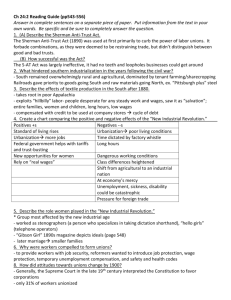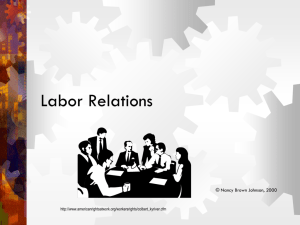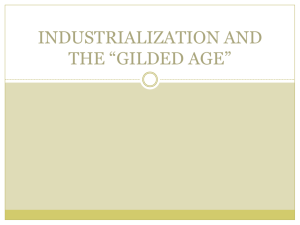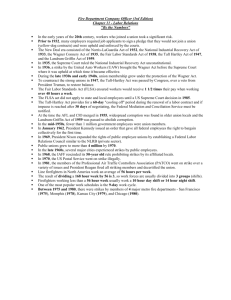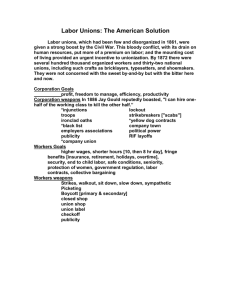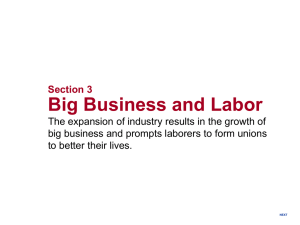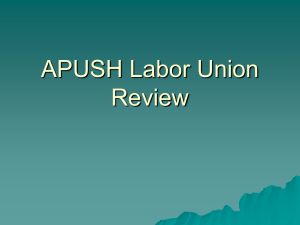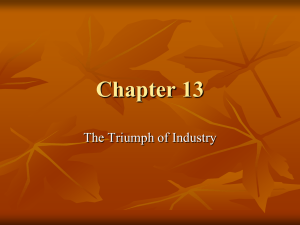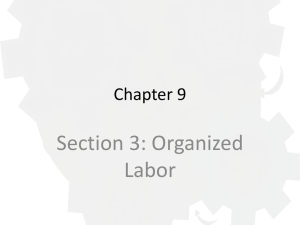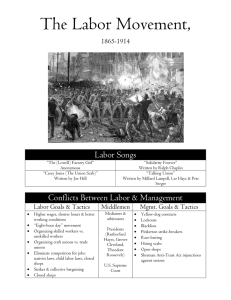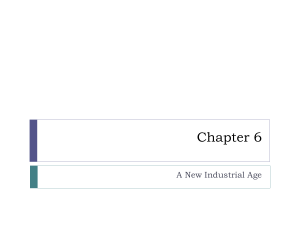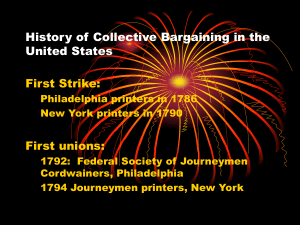Views on the Economy and Labor (1865-1898)
advertisement
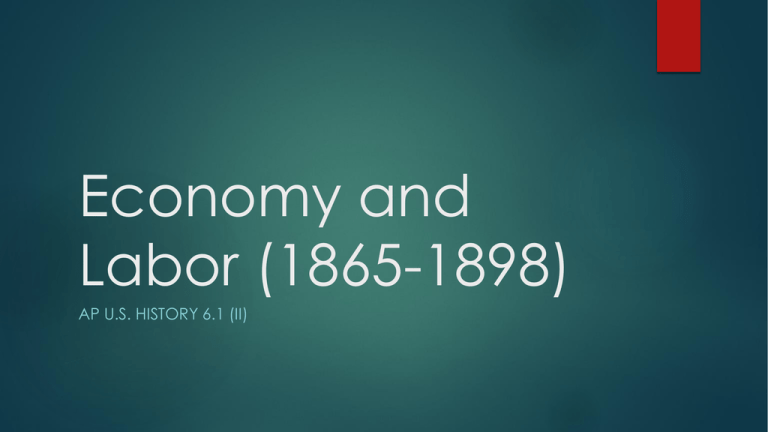
Economy and Labor (1865-1898) AP U.S. HISTORY 6.1 (II) Laissez-faire Policies and Competition Laissez-faire No government intervention in the economy No regulations (Hands off) The market will govern itself Extreme Capitalism Many felt this policy promoted long term economic development Even in times of recession government should be hands off Expansion of the Labor Force Domestic Migration Rural to urban International Immigration 25 Million between 1865 & 1915 Eastern Industrial Cities 1870s & 1880s England, Ireland, and Northern Europe By the end of the 1800s (New Immigration Southern and Eastern Europe Italy, Greece, Poland The West Dominated by Mexican and Asian (Chinese) immigration What Was Driving International Immigration Push Factors Pull Factors Escaping poverty and oppression Economic opportunities Recruitment of international laborers Employers would actively encourage migration to industrial cities and western lands Newspaper advertisements Ex. Railroad recruitment of “settlers” Increasing Ethnic Tensions Immigrants Europe from Southern and Eastern Displaced the old immigrants (English and Irish) from industrial jobs Displaced mines Willing Northern European workers in eastern to accept lower wages Immigrants from Mexico and China competed for jobs in the west Child Labor On the Rise By 1900 1.7 million children under the age of 16 were employed in factories and fields Why? Families A needed the additional income way to keep mothers/wives at home Reformers take notice Public outraged leads to the passage of child labor laws Limited Laws impact were ignored and did not impact child labor in agriculture Labor vs. Management Transition Battled Most Low from artisan to industrial production over wages and conditions wages did not provide a level of comfort job security Boom/bust cycles of the economy Technology Seasonality Poverty was always just a step away Labor vs. Management Working conditions 10-12 hours a day 6 days a week Unsafe and unhealthy factories Accidents were frequent and severe Losing limbs, death Loss of control of labor Modern labor corporation = labors lost control of their own Subjected Factory to total control of managers efficiency > condition of laborers Labor vs. Management Growth of Labor Unions Labor unions existed before the Civil War, but were small craft unions The National Labor Union (1866) William First attempt at uniting separate unions into one 640,000 Molly H. Sylvis members (no women or children) Maguires Militant labor group Labor Strikes & Unions The Great Railroad Strike of 1877 10% cut in wages Disrupted trans. from St. Louis to Baltimore 100+ die in the weeks following The Knights of Labor (1869) First national labor organization Loosely organized One union for all Welcomed women Wage system vs. cooperative system Labor Strikes & Unions The American Federation of Labor Association of various smaller craft unions Better wages & conditions Embraced the ideas of Capitalism Desired a bigger slice of the pie for workers Generally hostile to women joining Women only drove down pay b/c they are weak Supported higher pay for women 8 Hour work day Labor Strikes May 1, 1886 AFL calls for a general strike May 4, 1886 Haymarket Strike Square at McCormick Harvester Company in Chicago Middle-class America shocked Anarchy becomes synonymous with labor unions Weakens the labor movement Labor Strikes The Homestead Strike Steel strike at one of Carnegie’s mills in Pittsburgh Amalgamated Association of Iron and Steel Workers Labor union weakened The Pullman Strikes


